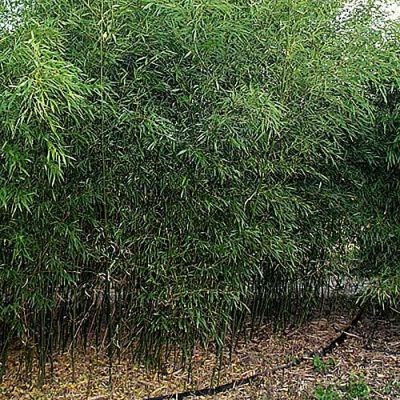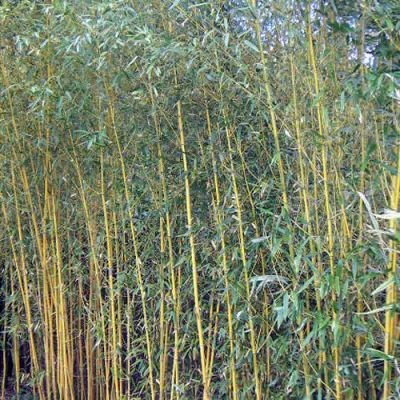Bamboo
Bamboo is a desirable plant that can provide a lovely focal point in the garden as well as adding structure. It is worth noting that some Bamboo spreads via its rhizomes (underground stems) and if left unchecked can become invasive. This can easily be kept under control however, by creating a physical barrier in the ground before planting, in order to contain the roots. You can also avoid this step by looking for 'clumping bamboo' which doesn't have this invasive habit. Should you need advise on planting bamboo, or any of our plants or trees, our experienced staff are always happy help or you can read our guide below >>>
Filter products
Why grow bamboo?
Bamboo is an easy plant to grow and has a myriad of uses across the globe. Everyone by now will have seen a bamboo chopping board or perhaps a bamboo toothbrush, but you'll also find it in flooring and some countries are even making bicycles from bamboo! Now, you're not likely to be growing bamboo for bicycle manufacture but it has a number of uses in the garden too:
It is an excellent plant for providing screening if you want more privacy in your garden, or wish to divide your space with something that grows quickly. Bamboo can also feature as a specimen plant with the long canes giving structure and height with leaves that offer a soft, therapeutic swishing in the breeze. Then of course, those canes can be cut for all manner of uses around the garden, most commonly to offer support to other plants, and as it is essentially a grass, it is quick to rejuvenate.
Finally, bamboo is excellent at drawing carbon from the atmosphere and storing it below ground aided by its vigorous growth and ability to regenerate quickly when cut.
How to grow bamboo:
There are 2 main types of bamboo, clump forming and running bamboo – the latter of which spreads via its roots. Many fall in the latter category so if you don't want it taking over your garden it is essential to contain the roots. Both types are versatile and will do well in any moist but well-draining soil.
If growing a small amount or using as a single specimen plant, it is best to simply bury a large enough container into the ground and plant the bamboo in the container, ensuring that about an inch of the container, stays proud of the surrounding ground, just to be sure nothing creeps across the surface.
If growing as a screen, then you are better off digging a trench. The trench needs to be between 2 and 4 feet deep and then lined with an impenetrable material such as corrugated iron or paving slabs. Refill the trench, compacting the soil and then plant your bamboo.
To be extra sure of having no spread, you can dig an extra 'maintenance' trench 1-2 feet in front of your first one, to a similar depth (but only wide enough for you to see into) where you can check for any creeping roots coming through which you can then trim away.
If you know you have a clump-forming bamboo that doesn't 'run', you can simply dig a hole that is twice the diameter of the root mass and of equal depth so that the top of the root mass is level with the surrounding soil surface. Mix the surrounding soil with some compost and backfill. Firm the root mass in with the heel of your foot and then water well.
Maintaining your bamboo:
As a grass, bamboo requires plenty of nitrogen to maintain growth potential so it is a good idea to feed them once in early spring and then once again in mid summer using a high nitrogen feed. Sprinkling some chicken manure, sparingly, around the plant will suffice.
You can also make your own feed by collecting young stinging nettle leaves and adding to water at a ratio of about 250g nettle leaves to 5L water. Leave for a couple of weeks (it will become very smelly) and then you can use this at a ratio of between 1:10 or 1:20 feed to water (the longer you leave it the stronger it becomes). If you have a 10L watering can, just add about 1L of your feed and then top up with water.




